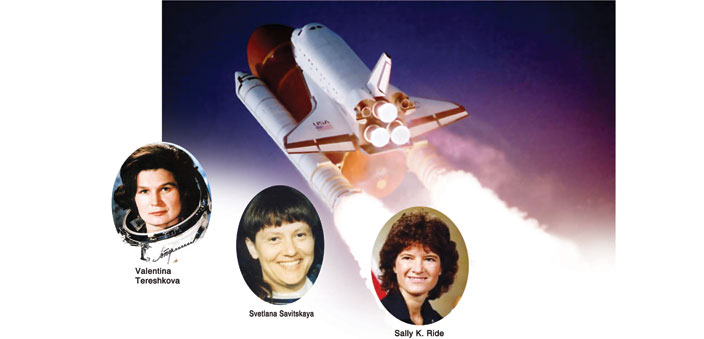Soviet cosmonaut Yuri Gagarin created history in 1961 when he travelled to outer space aboard the Vostok I spacecraft. The space age had dawned. It was proved beyond doubt that humans could survive in outer space.
Close on the heels of the USSR, the USA had begun Project Mercury, a programme that aimed at realising American dreams of human space flight. In 1961, 25 women from all over the country were invited to participate in a private programme that assessed women’s fitness for space flight. Thirteen women successfully completed extensive endurance tests. Unfortunately, the programme was unexpectedly cancelled, aborting their chances of becoming the first women in space. That honour went to Valentina Tereshkova of USSR.
Valentina hailed from a humble background and worked in a textile mill. She was inspired by Gagarin’s feat and volunteered for the Soviet space programme in 1961. She had 126 jumps to her credit as an amateur parachutist. Over the next eighteen months, she studied hard and underwent gruelling physical and psychological tests before being chosen as the chief pilot of the Vostok 6.
On June 16, 1963, Valentina was launched into orbit. The flight was meant to last only a day, but it was extended to almost three days and she made 48 orbits of Earth. She maintained flight logs, took photographs and conducted experiments designed to understand how gravitational forces affected a woman’s body. Valentina returned to land a Russian hero and a beacon of hope for future women astronauts.
It would be 19 years before another woman set foot in space again. Svetlana Savitskaya, again a Russian, travelled to the Soviet space station Salyut 7 in 1982. During her second space mission in 1984, she became the first woman to perform a spacewalk.
The space age saw a marked rivalry between the USA and USSR. While the USSR sent its astronauts into space first, the Americans were the first to land on the moon. Nearly twenty years after Valentina made her trip, the US included astrophysicist Sally K. Ride as a crew member on Space Shuttle Challenger in 1983, making her the first American woman in space.
Since then, women have contributed immensely in space exploration, be it commanding space shuttles or the International Space Station (ISS). In 2010, a record of sorts was set when four women were in space at the same time during the space shuttle mission STS-131 – the most number of women in space at one time.

